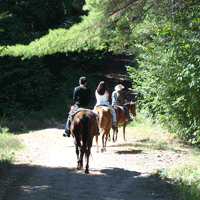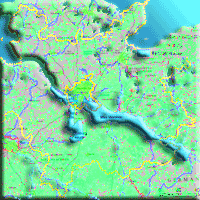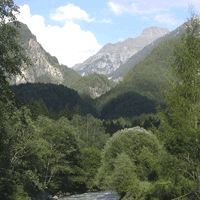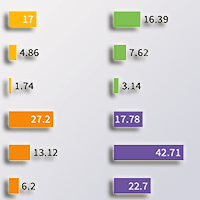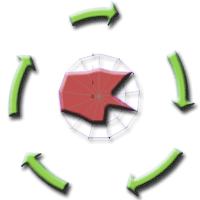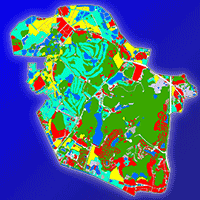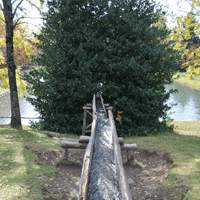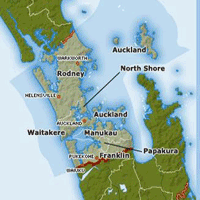
Tourism innovation in the forestry sector: comparative analysis between Auckland Region (New Zealand) and Trentino (Italy)
S Notaro (1), A Paletto (2) , M Piffer (1)
iForest - Biogeosciences and Forestry, Volume 5, Issue 5, Pages 262-271 (2012)
doi: https://doi.org/10.3832/ifor0631-005
Published: Oct 24, 2012 - Copyright © 2012 SISEF
Technical Reports
Abstract
Innovation is a primary aspect of economic growth and development and depends on the ability of entrepreneurs to create economic value by introducing new products or services, designing different production processes or rearranging organisational practices. The spreading of innovation is a key element in all economic sectors, including the forestry sector. Four types of innovation can be found in the forestry sector: product innovations (e.g., wood assortments), service innovations (e.g., biodiversity conservation and forest recreation), technological innovations (e.g., the introduction of new machinery, such as harvesters, processors or forwarders) and organisational innovations (e.g., changes in the production process or in the firm’s organisational structure). In this paper, we focus on service innovations linked to tourism and recreation in the forest using a comparative investigation. In particular, three types of recreational innovations in the forest (adventure parks, educational farms, and cultural attractions) were analysed within two case studies located poles apart (Auckland Region in New Zealand and Trentino in Italy). The results of a questionnaire, submitted during face-to-face interviews, to a sample of New Zealand and Italian entrepreneurs indicated the level of innovation in the forestry sector, the elements of weakness and strength of the innovation process, and the potential of the transferability of novelties into each of the two contexts.
Keywords
Forestry Innovation System, Entrepreneurship, Tourism and Recreation in Forest
Authors’ Info
Authors’ address
Forest Monitoring and Planning Research Unit, Agricultural Research Council (CRA-MPF), p.za Nicolini 6, I-38122 Villazzano (TN - Italy)
Corresponding author
Paper Info
Citation
Notaro S, Paletto A, Piffer M (2012). Tourism innovation in the forestry sector: comparative analysis between Auckland Region (New Zealand) and Trentino (Italy). iForest 5: 262-271. - doi: 10.3832/ifor0631-005
Academic Editor
Marco Borghetti
Paper history
Received: Jul 31, 2012
Accepted: Oct 02, 2012
First online: Oct 24, 2012
Publication Date: Oct 30, 2012
Publication Time: 0.73 months
Copyright Information
© SISEF - The Italian Society of Silviculture and Forest Ecology 2012
Open Access
This article is distributed under the terms of the Creative Commons Attribution-Non Commercial 4.0 International (https://creativecommons.org/licenses/by-nc/4.0/), which permits unrestricted use, distribution, and reproduction in any medium, provided you give appropriate credit to the original author(s) and the source, provide a link to the Creative Commons license, and indicate if changes were made.
Web Metrics
Breakdown by View Type
Article Usage
Total Article Views: 121823
(from publication date up to now)
Breakdown by View Type
HTML Page Views: 61590
Abstract Page Views: 53379
PDF Downloads: 4916
Citation/Reference Downloads: 71
XML Downloads: 1867
Web Metrics
Days since publication: 4797
Overall contacts: 121823
Avg. contacts per week: 177.77
Citation Metrics
Article Citations
Article citations are based on data periodically collected from the Clarivate Web of Science web site
(last update: Mar 2025)
Total number of cites (since 2012): 7
Average cites per year: 0.50
Publication Metrics
by Dimensions ©
Articles citing this article
List of the papers citing this article based on CrossRef Cited-by.
References
Systems of Innovation: Technologies, Institutions and Organizations. Pinter/ Cassell, London, UK.
Gscholar
Institutions and organisations in systems of innovation. In: “Systems of Innovation: Technologies, Institutions and Organizations” (Edquist C ed). Pinter/Cassell Academic, London, UK and Washington, USA.
Gscholar
An overview of innovation. In: “The positive sum strategy: harnessing technology for economic growth” (Landau R, Rosenberg N eds). National Academic Press, Washington,USA, pp. 275-305.
Gscholar
Innovation, knowledge and growth: Adam Smith, Schumpeter and the moderns. Routledge, London, UK.
Gscholar
A technique for the measurement of attitudes. Archives of Psychology 22: 1-55.
Gscholar
Innovation and entrepreneurship in forestry in Central Europe. Koninklijke Brill NV, Leiden. The Netherlands.
Gscholar
The theory of economic development. Harvard economic studies, vol. XLVI, Harvard University Press, Cambridge, MA, USA. English edition 1934.
Gscholar
Innovation in forest-related territorial goods and services: an introduction. In: “Innovation in forestry. Territorial and value chain relationships” (Weiss G, Pettenella D, Ollonqvist P, Slee B eds). CABI International, Wallingford, USA.
Gscholar
Towards environmental innovation systems. Springer, Berlin, Germany.
Gscholar

